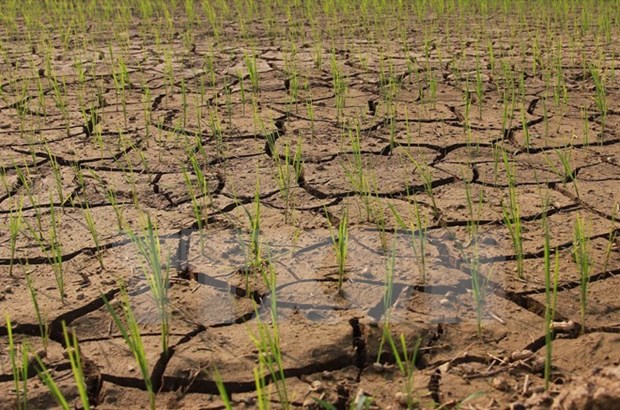Extreme weather events to become more acute in Vietnam
Extreme weather events are forecast to become more severe in Vietnam as a result of El Nino, which has already heavily affected countries around the globe.
 A dried field (Photo: VNA)
A dried field (Photo: VNA)The El Nino pattern in 2015 and 2016 will be as serious as the record pattern, 1997 to 1998, but it will be longer and cover a wider area, according to Deputy General Director of the National Hydro-Meteorological Service Le Thanh Hai.
Impacts of El Nino are very clear this year, he said, elaborating that there has been a large number of storms in the northwest Pacific Ocean, but only five storms and two tropical depressions have been recorded in the East Sea. Eighteen storms appeared in the waters in 2013.
The rainy season began later and will end earlier than in previous years. Rainfall is also predicted to be much lower than average, the expert said.
For example, there is now a shortage of rain in Vietnam’s central areas, despite being the rainy season (from September to December). The same situation was reported in the Central Highlands, and the northern and central regions. The rainfall in those areas is 20-40 percent lower than in previous years. However, it is higher than the 10 percent recorded in 2014.
The acute drought in central provinces like Ninh Thuan, Binh Thuan, Khanh Hoa and Phu Yen also results from water shortages in the previous rainy season.
Additionally, storms and tropical depressions contribute up to 40 percent of the freshwater in the central region, thus it will experience water scarcity in years when few storms appear, he said, noting the scarcity is inevitable, as there were only two storms in this region in 2014 and 2015.
This winter is predicted to be 1-2 degrees Celsius warmer than the past years’ averages, which can be seen in temperatures since September.
Traditionally, about three or four cold spells occur in the north from October, but the region still withstood high temperatures on several days throughout the month.
Though Vietnam has still recorded extreme cold spells in recent years, the spells lasted for five to seven days, or even three to four days – much shorter than in the past, Hai added.
He also pointed out El Nino’s strongly varying impacts on different regions, underlining that while Ninh Thuan encountered a severe drought, Quang Ninh recorded historic downpours with rainfall of up to 1,600mm in some places. Such rainfall was unprecedented and could be a millennia-long record.
He also highlighted a temperature of 12 degrees Celsius in Sapa, in the northern province of Lao Cai, last July. This was attributable to El Nino.
Another serious problem in 2015 is the abnormal flooding in the Mekong Delta. The flood season falls in October and has an average water level of 3 metres. However, this year’s flood levels were 1-1.5 metres lower than in previous years.
The low water level also led to acute saline intrusion much deeper than the traditional 30 to 40km of mainland that is contaminated with saltwater.
The National Hydro-meteorological Service forecasts the next dry season will be extremely severe as seen through further saltwater intrusion, water and rain shortages, heat waves and few cold spells. Notably, droughts in Ninh Thuan and Binh Thuan provinces will become even more acute than in 2015, Hai stressed.-VNA













